The History of Stuffed Grape Leaves (Dolma) & Recipe
43

Stuffed grape leaves, known as dolma or dolmades in various cultures, have a rich history that spans multiple regions and centuries. The dish is characterized by grape leaves filled with a mixture of rice, herbs, and sometimes meat, creating a flavorful and aromatic delicacy. Here's a brief history of stuffed grape leaves:
- Ancient Roots:
- The origins of stuffed grape leaves can be traced back to ancient times, with evidence suggesting that the dish has been enjoyed for thousands of years. The use of grape leaves in culinary practices likely originated in the Middle East and Mediterranean regions.
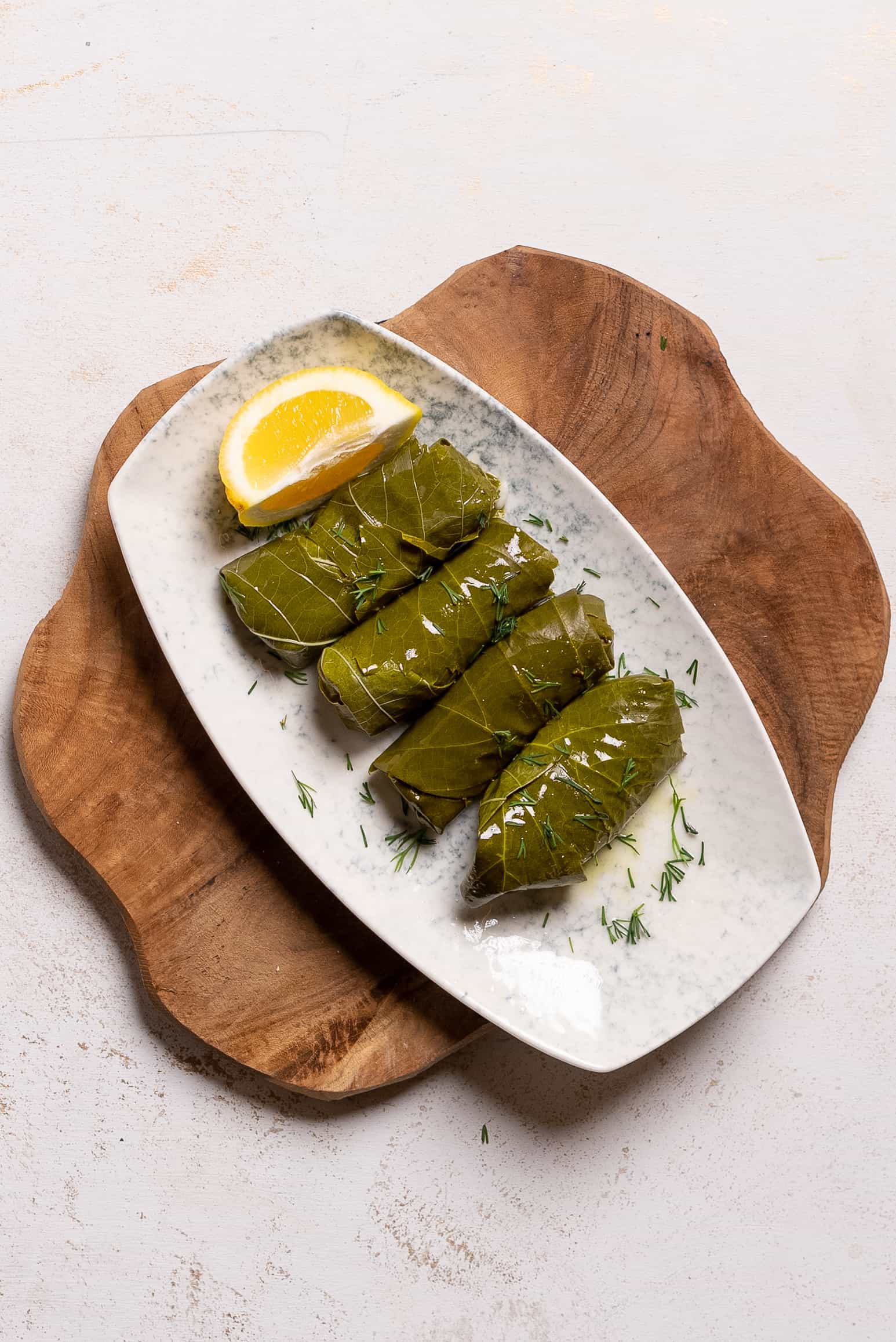
- Middle Eastern Influence:
- The dish is often associated with Middle Eastern cuisine, particularly in countries like Lebanon, Syria, and Greece. In these regions, stuffed grape leaves are known as "dolma" or "warak enab."

- Ancient Greece and Rome:
- In ancient Greece and Rome, stuffed grape leaves were part of the culinary repertoire. The filling typically included rice, meat, and various herbs. The concept of wrapping food in leaves, including grape leaves, was prevalent in these ancient cultures.
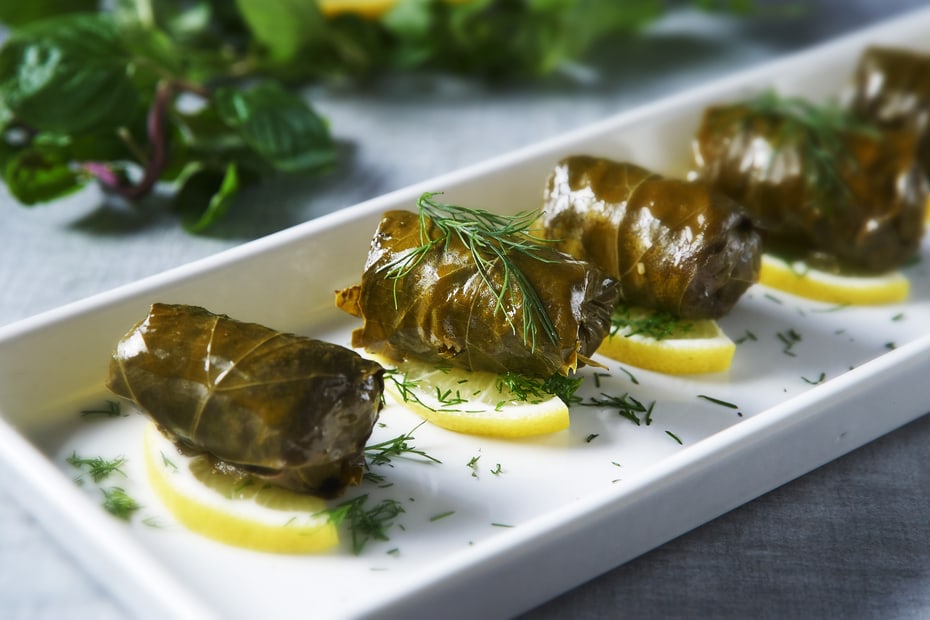
- Spread through the Ottoman Empire:
- The Ottoman Empire, which spanned from the 14th to the early 20th century, played a crucial role in the dissemination of stuffed grape leaves throughout its vast territories. The dish became popular in regions such as Turkey and the Balkans.

- Cultural Variations:
- As the dish spread geographically, different cultures adapted the recipe according to local tastes and ingredients. Some versions include ground meat such as lamb or beef, while others remain vegetarian with a rice and herb filling.
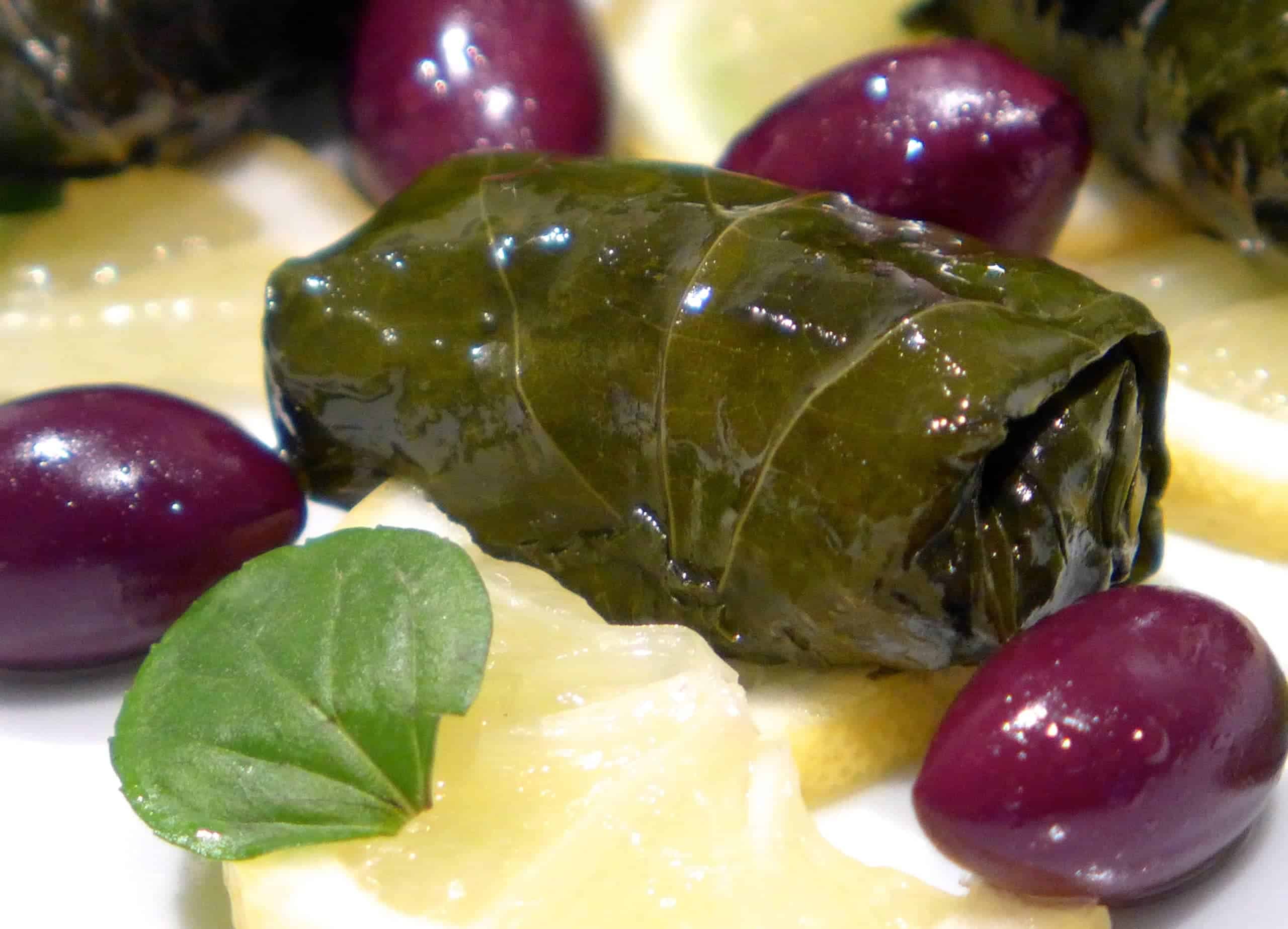
- Mediterranean and Middle Eastern Influence:
- Stuffed grape leaves have become a staple in Mediterranean and Middle Eastern cuisine, served as appetizers, side dishes, or main courses. The preparation methods and ingredients can vary widely from region to region.

- Modern Variations:
- In modern times, stuffed grape leaves have gained popularity beyond their traditional regions. They are often enjoyed as part of a mezze platter or as a standalone dish in many international cuisines.
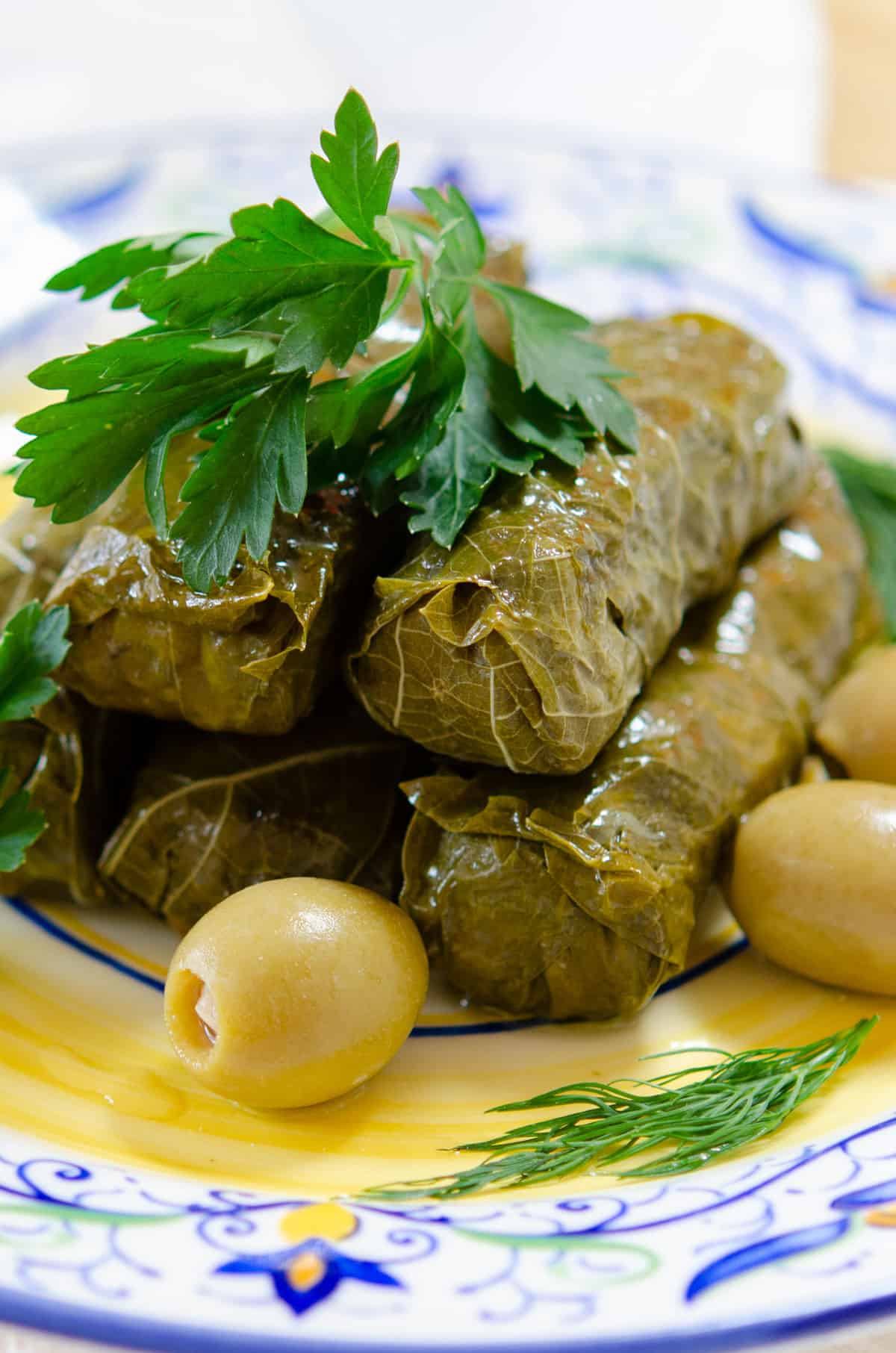
- Cultural Celebrations:
- Stuffed grape leaves are frequently associated with cultural celebrations and special occasions. They are often prepared for festive events, family gatherings, and holidays.
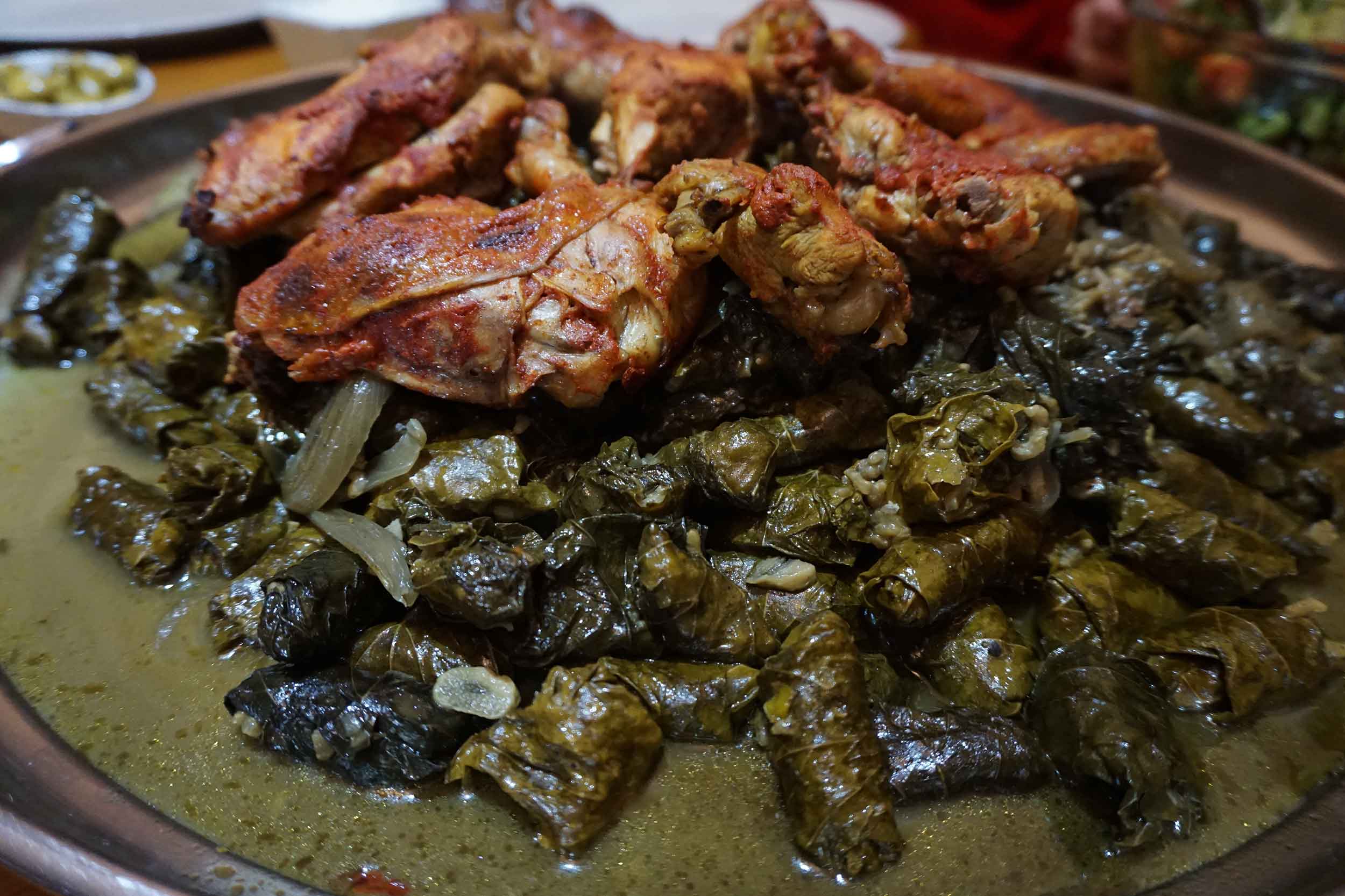
- Commercial Availability:
- With globalization and the availability of diverse ingredients worldwide, stuffed grape leaves are also found in commercial markets, either canned or freshly prepared. This has further contributed to the dish's popularity on a global scale.
Overall, the history of stuffed grape leaves reflects the diverse culinary influences and cultural exchanges that have shaped the rich tapestry of Mediterranean and Middle Eastern cuisines over centuries.
Vegetarian Stuffed Grape Leaves (Dolma) Recipe:
Ingredients:
- 1 jar of grape leaves (about 60-70 leaves), preserved in brine
- 1 cup long-grain rice
- 1 large onion, finely chopped
- 1/2 cup fresh dill, chopped
- 1/4 cup fresh mint, chopped
- 1/3 cup pine nuts (optional)
- 1/4 cup olive oil
- Juice of 2 lemons
- Salt and pepper to taste
- Water
- Greek yogurt (for serving, optional)
Instructions:
- Prepare the Grape Leaves:
- If the grape leaves are preserved in brine, rinse them thoroughly under cold water to remove excess salt. Gently separate the leaves and trim any tough stems.
- Prepare the Filling:
- In a large bowl, combine the rice, chopped onion, dill, mint, and pine nuts (if using). Add olive oil, lemon juice, salt, and pepper. Mix the ingredients well.
- Assemble the Dolma:
- Place a grape leaf on a flat surface, vein side up. Trim any tough stem. Spoon a small amount (about a tablespoon) of the rice mixture onto the center of the leaf.
- Fold the bottom part of the leaf over the filling, then fold in the sides, and roll it up tightly into a compact cylinder.
- Repeat the process with the remaining grape leaves and filling.
- Cooking the Dolma:
- Line the bottom of a wide pot with a few grape leaves. Arrange the stuffed grape leaves in layers, placing them snugly side by side.
- Pour enough water into the pot to cover the stuffed grape leaves. Place a heatproof plate on top of the dolma to keep them from unraveling during cooking.
- Cover the pot and bring the water to a boil. Reduce the heat and simmer for about 45-60 minutes or until the rice is cooked and the grape leaves are tender.
- Serve:
- Once cooked, allow the dolma to cool slightly before serving. You can serve them warm or at room temperature.
- Optionally, serve with a side of Greek yogurt for dipping.
Enjoy your homemade stuffed grape leaves! Feel free to customize the filling according to your taste preferences or add a meat component, such as ground lamb or beef, for a non-vegetarian version.
I put here some dolma recipe videos including non-vegeterians variations of it;
1) https://youtu.be/PUCgBaQe1g8?si=gviBmjA62bMmF2lM
2) https://youtu.be/SwU2-5g39xk?si=QkeVHCu6_saeR3uU
3) https://youtu.be/G7OLFDL63J4?si=4V9fZdGSfpic1keW
4) https://youtu.be/lEwRBceJC2c?si=fsL86zxrrnRReFS7
5) https://youtu.be/XGlIYEmv0Vc?si=Mxf25kUKyJQYC_e7
6) https://youtu.be/SncwgN9p2D8?si=gMhEsVsuEOsoWDPo
7) https://youtu.be/fDLDi-iSZtc?si=hqpPLyHS-CqdU_Oo
8) https://youtu.be/5a5HeaQfkes?si=Gshc5uYiP_58DLTq
9) https://youtu.be/2wLEzvXVKm4?si=zsF7cx0EEezlP2YW
10) https://youtu.be/sfQm4xxr09c?si=wvELEf5zwCbBlalQ
References;
- Labon, Joanna (1995). Balkan Blues: Writing Out of Yugoslavia. Northwestern University Press. ISBN 9780810113251.
- Davidson, Alan. The Oxford Companion to Food. p. 258.
- Salloum, Habeeb (2012-02-28). Arabian Nights Cookbook: From Lamb Kebabs to Baba Ghanouj, Delicious Homestyle Arabian Cooking. Tuttle Publishing. ISBN 978-1-4629-0524-9.
- Perry, Charles Perry (2014-11-20). "Dolma". The Oxford Companion to Food. Oxford University Press. ISBN 978-0-19-967733-7. Archived from the original on 2018-06-30. Retrieved 2018-06-29.
- Ayto, John (2013). "Dolmades". The Diner's Dictionary. Oxford University Press. ISBN 978-0-19-964024-9. Archived from the original on 2018-06-30. Retrieved 2018-06-29.
- "Dolma". Merriam Webster.
- Davidson, Alan (1999). Oxford Companion to Food. p. 253.
- Ghanoonparvar, M. R. (1995). "DOLMA". In Yarshater, Ehsan (ed.). Encyclopædia Iranica, Volume VII/5: Divorce IV–Drugs. London and New York: Routledge & Kegan Paul. pp. 478–479. ISBN 978-1-56859-023-3.
- Meri, Josef (2016-06-23). The Routledge Handbook of Muslim-Jewish Relations. Routledge. p. 486. ISBN 978-1-317-38321-5.
- Kittler, Pamela Goyan; Sucher, Kathryn P.; Nelms, Marcia (2011-08-22). Food and Culture. Cengage Learning. ISBN 978-0-538-73497-4.
- "The Jews, stuffed cabbage and Simchat Torah". Jewish Telegraphic Agency. 2012-10-07. Archived from the original on 2017-11-10. Retrieved 2018-06-30.
- Janes, Lauren; Bourguignon, Hélène (2014). "Curiosité gastronomique et cuisine exotique dans l'entre-deux-guerres: Une histoire de goût et de dégoût". Vingtième Siècle. Revue d'histoire (in French). 123 (3): 69. doi:10.3917/vin.123.0069. ISSN 0294-1759.
- "Aubergines à l'algérienne". Le Pot-au-feu: 245. 1934.
- Qırımtatar yemekleri: Cарма, retrieved 2023-07-19



































